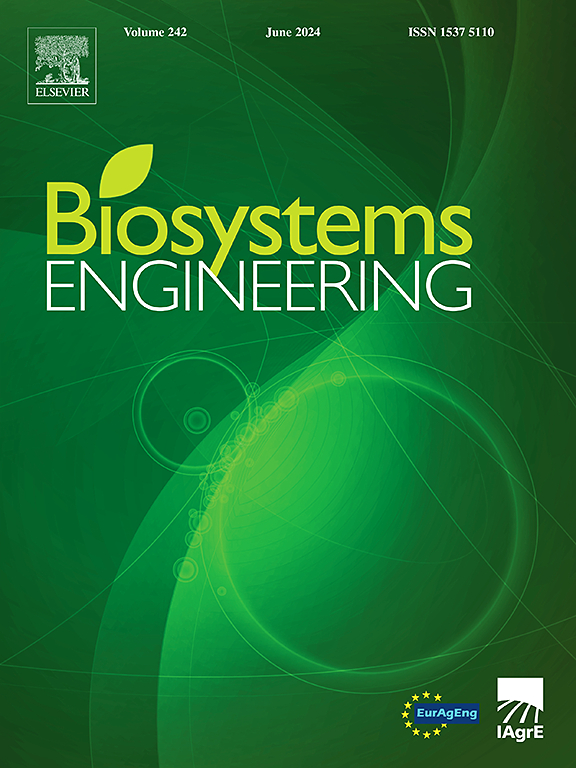Porometer for estimating stomatal conductance in maize: Determination of trueness and precision according to ISO 5725
IF 4.4
1区 农林科学
Q1 AGRICULTURAL ENGINEERING
引用次数: 0
Abstract
Stomatal conductance (gs) is a key variable for quantifying crop water status and different technologies have been developed for its determination. While infrared gas analysers (IRGA) are widely recognised as a reference for gs measurement, their limited usability and portability, and their cost, are making porometers an increasingly seductive alternative. However, few studies have compared porometers with other methods, and key information on performance metrics along the gs biophysical range is missing. The accuracy (precision and trueness) of the LI-600 porometer for gs measurement in maize was evaluated using the ISO 5725 protocol. A ring trial was carried out by growing plants in pots under three irrigation regimes to identify different gs levels. Measurements of gs were performed by three independent groups of operators at two growth stages using the porometer and the IRGA (reference). For intermediate gs values, precision was satisfactory (mean relative standard deviation of repeatability and reproducibility <19%), whereas marked underestimations were observed. In cases of severely stressed and well-watered plants, the trueness was good (overall R2 was 0.62), whereas the poor precision could be compensated by the possibility of taking a high number of replicates (very short time is needed for acquiring data). This, together with the high usability, make porometers an alternative in the case of intensive or time-constrained field campaigns.
估计玉米气孔导度用孔隙计:根据ISO 5725测定真性和精密度
气孔导度是衡量作物水分状况的关键变量,目前已发展出多种测定气孔导度的技术。虽然红外气体分析仪(IRGA)被广泛认为是gs测量的参考,但其有限的可用性和便携性以及其成本,使孔隙计成为越来越有吸引力的替代方案。然而,很少有研究将孔隙度计与其他方法进行比较,并且缺少关于gs生物物理范围内性能指标的关键信息。采用ISO 5725标准对LI-600型土壤水分测定仪的准确度(精密度和真实度)进行了评价。为了确定不同的gs水平,在三种灌溉方式下盆栽植物进行了环形试验。gs的测量由三个独立的操作员组在两个生长阶段使用孔隙计和IRGA(参考)进行。对于中间的gs值,精密度令人满意(重复性和再现性的平均相对标准偏差为19%),但观察到明显的低估。在严重胁迫和水分充足的植物中,准确性较好(总体R2为0.62),而精度较差可以通过进行大量重复(获取数据所需的时间很短)来弥补。这一点,加上高可用性,使孔隙计成为密集或时间有限的现场活动的替代方案。
本文章由计算机程序翻译,如有差异,请以英文原文为准。
求助全文
约1分钟内获得全文
求助全文
来源期刊

Biosystems Engineering
农林科学-农业工程
CiteScore
10.60
自引率
7.80%
发文量
239
审稿时长
53 days
期刊介绍:
Biosystems Engineering publishes research in engineering and the physical sciences that represent advances in understanding or modelling of the performance of biological systems for sustainable developments in land use and the environment, agriculture and amenity, bioproduction processes and the food chain. The subject matter of the journal reflects the wide range and interdisciplinary nature of research in engineering for biological systems.
 求助内容:
求助内容: 应助结果提醒方式:
应助结果提醒方式:


